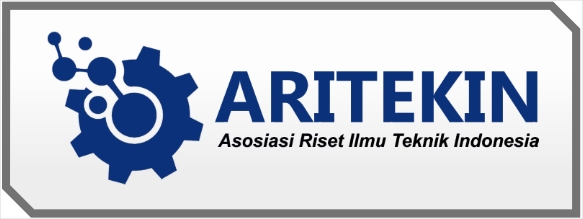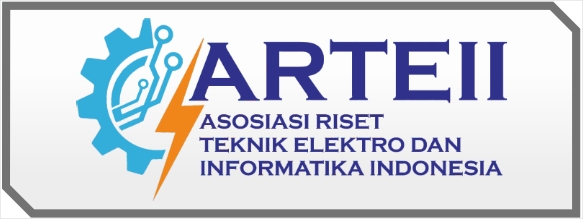Perancangan Sistem Pemantauan Kelelahan Driver Berbasis IoT (Internet Of Things) Yang Adaptif Untuk Transportasi Makanan Segar
Studi Kasus Di Industri Logistik
DOI:
https://doi.org/10.59581/jkts-widyakarya.v1i4.2959Keywords:
Driver Fatigue Monitoring, IoT (Internet of Things), Fresh Food Transportation, Logistics IndustryAbstract
In the logistics industry, fresh food transportation requires effective management of driver fatigue to maintain safety and service quality. With the increasing digital connectivity, Internet of Things (IoT) technology has become a promising solution to monitor driver fatigue in real-time. This research aims to design an adaptive IoT-based driver fatigue monitoring system specifically for fresh food transportation. Through a case study in the logistics industry, we identified specific challenges and needs in driver fatigue management. Based on the identification results, we developed a system that utilizes IoT sensors integrated in vehicles and drivers' smartphones. The system automatically monitors the driver's physical condition and behavior and provides real-time alerts if signs of fatigue are detected. With an adaptive approach, the system can customize recommendations and interventions according to the measured fatigue level. The results of the case study show that the designed system is able to reduce the risk of driver fatigue, increase transportation safety, and improve service quality in fresh food transportation. This research contributes to the practical understanding of the implementation of IoT technology in driver fatigue management, particularly in the context of the logistics and fresh food transportation industries.
References
Attié, E., & Meyer-Waarden, L. (2022). The acceptance and usage of smart connected objects according to adoption stages: an enhanced technology acceptance model integrating the diffusion of innovation, uses and gratification and privacy calculus theories. Technological Forecasting and Social Change, 176. https://doi.org/10.1016/j.techfore.2022.121485
Baron, M. (2020). Internet of things. In The Routledge Companion to Managing Digital Outsourcing (pp. 319–330). Taylor and Francis. https://doi.org/10.4324/9781351037785-23
Benouda, H., & Lachgar, M. (2020). IoT devices controlled using mobile apps. MENACIS2020.
Berlianty, I., & Rachmawati, D. (2021). Noise Level Measurement to Reduce the Risk of Injury with the Internet of Things and Ergonomic Approach. RSF Conference Series: Engineering and Technology, 1(1), 126–135.
Breunig, M., Bradley, P. E., Jahn, M., Kuper, P., Mazroob, N., Rösch, N., Al-Doori, M., Stefanakis, E., & Jadidi, M. (2020). Geospatial data management research: Progress and future directions. ISPRS International Journal of Geo-Information, 9(2). https://doi.org/10.3390/ijgi9020095
Budisanjaya, R., & Dkk, I. (2016). Pemantau Suhu dan Kadar Air Kompos Berbasis Internet Of Things (Iot) dengan Arduino Mega dan Esp8266. Jurnal Ilmiah Rekayasa Pertanian Dan Biosistem, 1(2).
CHEN, M. (2016). IMPROVING EFFICIENCY, SECURITY AND PRIVACY OF THE INTERNET OF THINGS—FROM RFID TO NETWORKED TAGS. In Revista Brasileira de Ergonomia.
Corichi-Herrejón, J., Santiago-Pineda, A., Montes-Gómez, B., Juárez-Cruz, A. S., Reyes-Zárate, G. G., Moreno-Moreno, J., & Pérez-Rojas, D. (2021). Ergonomics Assessment Based on IoT Wearable Device. Advances in Intelligent Systems and Computing, 1378 AISC. https://doi.org/10.1007/978-3-030-74009-2_65
Dhanalakshmi, G., Jeevana Jyothi, K., & Naveena, B. (2022). Raspberry Pi-Based Heart Attack and Alcohol Alert System Over Internet of Things for Secure Transportation. In Lecture Notes on Data Engineering and Communications Technologies (Vol. 75). https://doi.org/10.1007/978-981-16-3728-5_32
Görçün, Ö. F., Aytekin, A., & Korucuk, S. (2023). Fresh food supplier selection for global retail chains via bipolar neutrosophic methodology. Journal of Cleaner Production, 419. https://doi.org/10.1016/j.jclepro.2023.138156
Jiang, Y., Lai, P., Chang, C. H., Yuen, K. F., Li, S., & Wang, X. (2021). Sustainable management for fresh food E-commerce logistics services. Sustainability (Switzerland), 13(6). https://doi.org/10.3390/su13063456
Khafi, A. M. (2019). Sistem Kendali Suhu Dan Kelembaban Pada Greenhouse Tanaman Sawi Berbasis IoT. Generation Journal, 3(2). https://doi.org/10.29407/gj.v3i2.12973
Marinakis, V., & Doukas, H. (2018). An advanced IoT-based system for intelligent energy management in buildings. Sensors (Switzerland), 18(2). https://doi.org/10.3390/s18020610
Murtianta, B., Susilo, D., & Salenda, R. (2018). Pemancar Modulasi Frekuensi dengan Modul GRF-3300. Techné : Jurnal Ilmiah Elektroteknika, 17(02). https://doi.org/10.31358/techne.v17i02.174
Niu, H., Zhang, M., Shen, D., Mujumdar, A. S., & Ma, Y. (2023). Sensing materials for fresh food quality deterioration measurement: a review of research progress and application in supply chain. In Critical Reviews in Food Science and Nutrition. https://doi.org/10.1080/10408398.2023.2195939
Patel, K. K., Patel, S. M., & Scholar, P. G. (2016). Internet of Things-IOT: Definition, Characteristics, Architecture, Enabling Technologies, Application & Future Challenges. International Journal of Engineering Science and Computing, 6(5). https://doi.org/10.4010/2016.1482
Perdana, D., Ramadhani, K., & Alinursafa, I. (2022). Analysis Of The MQTT Protocol On Hydroponic System Based On Internet Of Things And Antares Platform. Webology, 19(2).
Pérez, I. (2023). Arduino IDE. Publicación Semestral, 11(21).
Prabowo, M. C. A., Hidayat, S. S., & Luthfi, F. (2020). Low Cost Wireless Sensor Network for Smart Gas Metering using Antares IoT Platform. 3rd International Conference on Applied Science and Technology, ICAST 2020. https://doi.org/10.1109/iCAST51016.2020.9557692
Rio Hartono, F., Much Ibnu Subroto, I., & Mulyono, S. (2022). Sistem Kontrol Penyiraman Otomatis Pada Pembibitan Padi Berbasis IOT Menggunakan Rule Base System. Jurnal Transistor Elektro Dan Informatika (TRANSISTOR EI, 4(2).
Sadjadi, S., Soltani, R., & Eskandarpour, A. (2014). Location based treatment activities for end of life products network design under uncertainty by a robust multi-objective memetic-based heuristic approach. Appl. Soft Comput., 23, 215–226. https://doi.org/10.1016/j.asoc.2014.06.028
Saiqul Umam, M., Adi Wibowo, S., & Agus Pranoto, Y. (2023). IMPLEMENTASI PROTOKOL MQTT PADA APLIKASI SMART GARDEN BERBASIS IOT (INTERNET OF THINGS). JATI (Jurnal Mahasiswa Teknik Informatika), 7(1). https://doi.org/10.36040/jati.v7i1.6131
Srivastava, D., Kesarwani, A., & Dubey, S. (2018). Measurement of Temperature and Humidity by using Arduino Tool and DHT11. International Research Journal of Engineering and Technology, 5(12).
Tong, J., Wang, Y. H., Fan, X. M., Zhang, S. J., & Chen, D. H. (2013). Monitoring system of cold chain logistics for farm fresh produce. Jilin Daxue Xuebao (Gongxueban)/Journal of Jilin University (Engineering and Technology Edition), 43(6). https://doi.org/10.7964/jdxbgxb201306044
Wang, Z., Huang, L., & He, C. X. (2019). A multi-objective and multi-period optimization model for urban healthcare waste’s reverse logistics network design. https://doi.org/10.1007/s10878-019-00499-7
Wasnik, P., & Jeyakumar, A. (2016). Monitoring stress level parameters of frequent computer users. International Conference on Communication and Signal Processing, ICCSP 2016, 1753–1757. https://doi.org/10.1109/ICCSP.2016.7754467
Wenji, W. (2021). Study on inventions of fresh food in commercial aspects using e-commerce over internet. Acta Agriculturae Scandinavica Section B: Soil and Plant Science, 71(4). https://doi.org/10.1080/09064710.2021.1880625
Zhao, J., Li, X., Huang, W., & Zheng, J. (2020). Potential risk factors for case fatality rate of novel coronavirus (COVID-19) in China: A pooled analysis of individual patient data. American Journal of Emergency Medicine, 38(11). https://doi.org/10.1016/j.ajem.2020.08.039
Downloads
Published
How to Cite
Issue
Section
License
Copyright (c) 2023 Jurnal Kendali Teknik dan Sains

This work is licensed under a Creative Commons Attribution-ShareAlike 4.0 International License.













